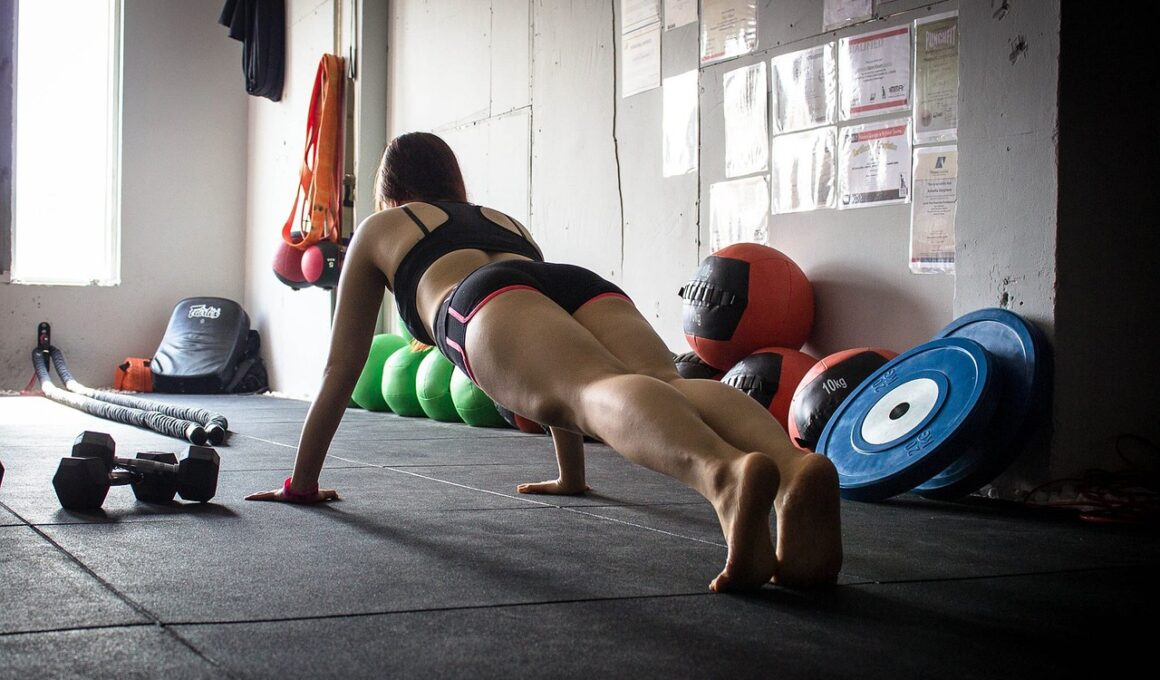Core Stability for Strength and Power Athletes
Core stability is critical for strength and power athletes to achieve optimal performance. The core consists of muscles located in the abdomen, lower back, hips, and pelvis. These muscles work collectively to stabilize the spine and pelvis, especially during movements requiring force. For athletes like weightlifters, sprinters, or throwers, an unstable core can significantly hinder performance. Enhancing core stability improves not only the ability to lift heavier but also the capability to perform explosive movements more efficiently. Proper core function allows for better force transfer from the lower body to the upper body. Implementing core stability exercises into your training regimen can enhance overall athletic performance.
The Importance of Core Strength
Strength athletes require a robust core since it acts as a fundamental support system during various lifts. A strong core benefits all power movements by providing a stable base from which the body can operate. Without adequate core strength, athletes risk injury and compromised biomechanics. With improved core strength, athletes can maintain proper postures and technique during workouts, which reduces stress on joints and ligaments. Incorporating exercises such as planks, dead bugs, and medicine ball throws can significantly fortify the core. Strengthening the core leads to higher stability and better performance under load during competitions.
Additionally, core stability contributes to injury prevention in strength and power athletes. An unstable core can lead to compensatory mechanisms, placing excess strain on muscles and joints that do not typically bear that load. Protecting the spine and maintaining proper alignment during intense workouts can reduce the frequency of injuries. A well-conditioned core allows athletes to withstand the physical demands of their sport. Injury risk decreases significantly when the core is strong, allowing for consistent training and performance without setbacks. Athletes who prioritize core strength can recover faster and perform at higher levels.
Furthermore, a stable core enhances athletic performance by improving movement efficiency. For athletes in dynamic sports, such as CrossFit or rugby, a strong core facilitates smooth transitions between motions. Core stability improves balance, coordination, and agility. Engaging in compound exercises that emphasize core strength can translate to better performance in specific athletic tasks. Exercises like squats, Olympic lifts, and kettlebell swings emphasize core engagement while recruiting major muscle groups, promoting overall power. Athletes must recognize the link between core stability and their performance in competitive environments.
Effective Core Stability Exercises
To improve core stability, athletes should incorporate a variety of exercises targeting all core muscles. Some beneficial exercises include planks, Russian twists, and bird dogs. Each of these performs the dual function of strengthening while enhancing stability. Planks engage the entire core, while Russian twists add rotational stability needed for athletes engaging in sports that require twisting motions. Bird dogs train opposite arm and leg coordination, vital for maintaining stability during functional movements. Regularly integrating these exercises into workouts can help build functional core strength necessary for optimal athletic performance.
Core stability training should follow a progressive overload principle, where resistance and difficulty increase over time. Athletes should start with simpler exercises before advancing to more complex ones that require greater stability. It’s crucial to focus on proper form and alignment to maximize benefits and minimize injury risks. Ensuring that workouts emphasize both endurance and strength components of the core can yield substantial improvements over time. Building core stability is a gradual process that requires consistency and dedication for optimal success during competitive seasons.
Another key aspect of enhancing core stability involves coordination with breathing techniques. Proper breathing helps maintain intra-abdominal pressure, which is essential for stabilizing the spine. Athletes should learn to engage their core during both inhalation and exhalation without losing form. Breathing exercises combined with core stabilization can foster a significant improvement in overall strength and endurance. Athletes who effectively manage breath while executing core exercises benefit from enhanced stability and control during demanding physical activities. Understanding this relationship amplifies the effectiveness of core-specific training programs.
Conclusion
In conclusion, core stability plays a pivotal role in promoting strength and power among athletes. The backbone of performance lies in a strong and functional core that supports the body during demanding physical challenges. By prioritizing core stability training through targeted exercises, athletes can mitigate the risk of injuries, improve their performance, and reach their potential. Incorporating a variety of indications, progressive overload, and breathing techniques will yield robust results. An investment in core stability training not only enhances athletic capability but also contributes to long-term health and resilience.


